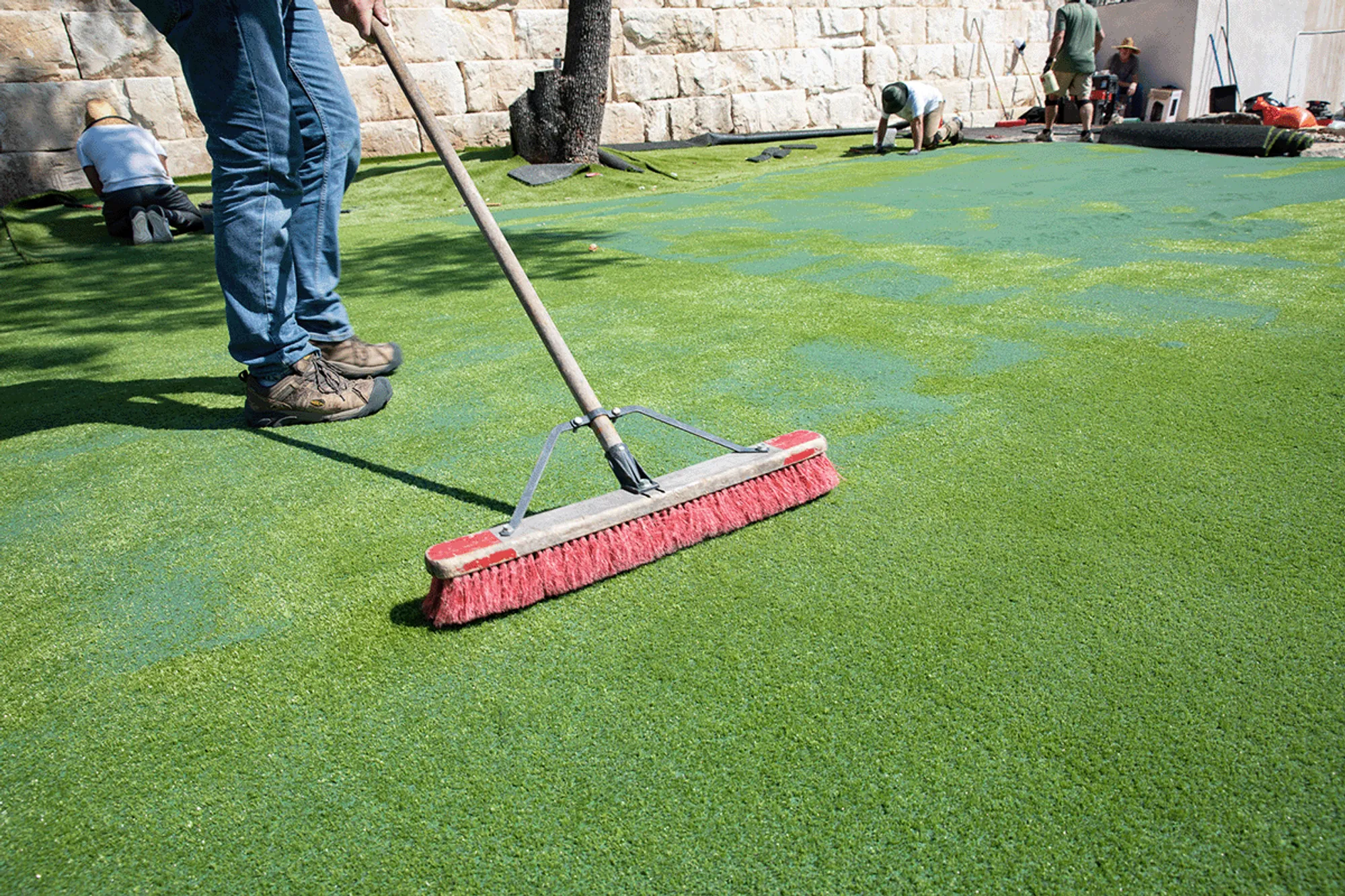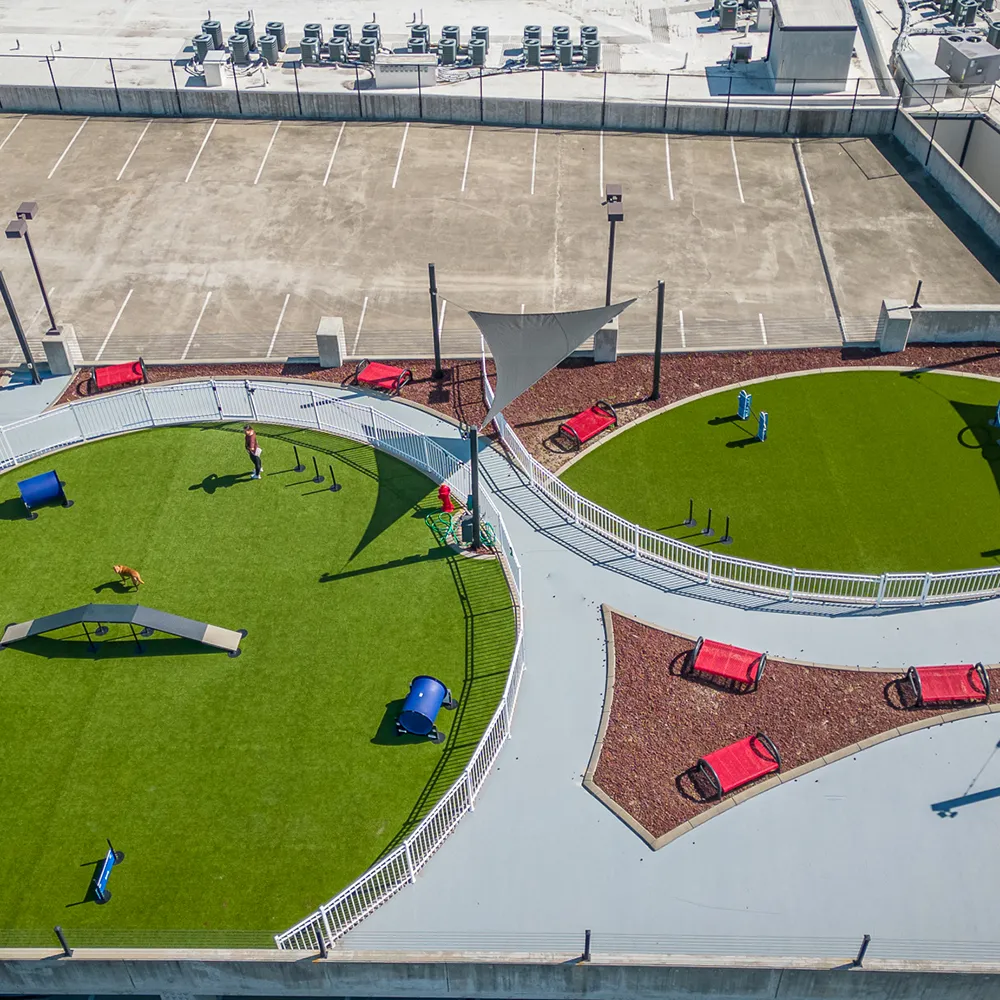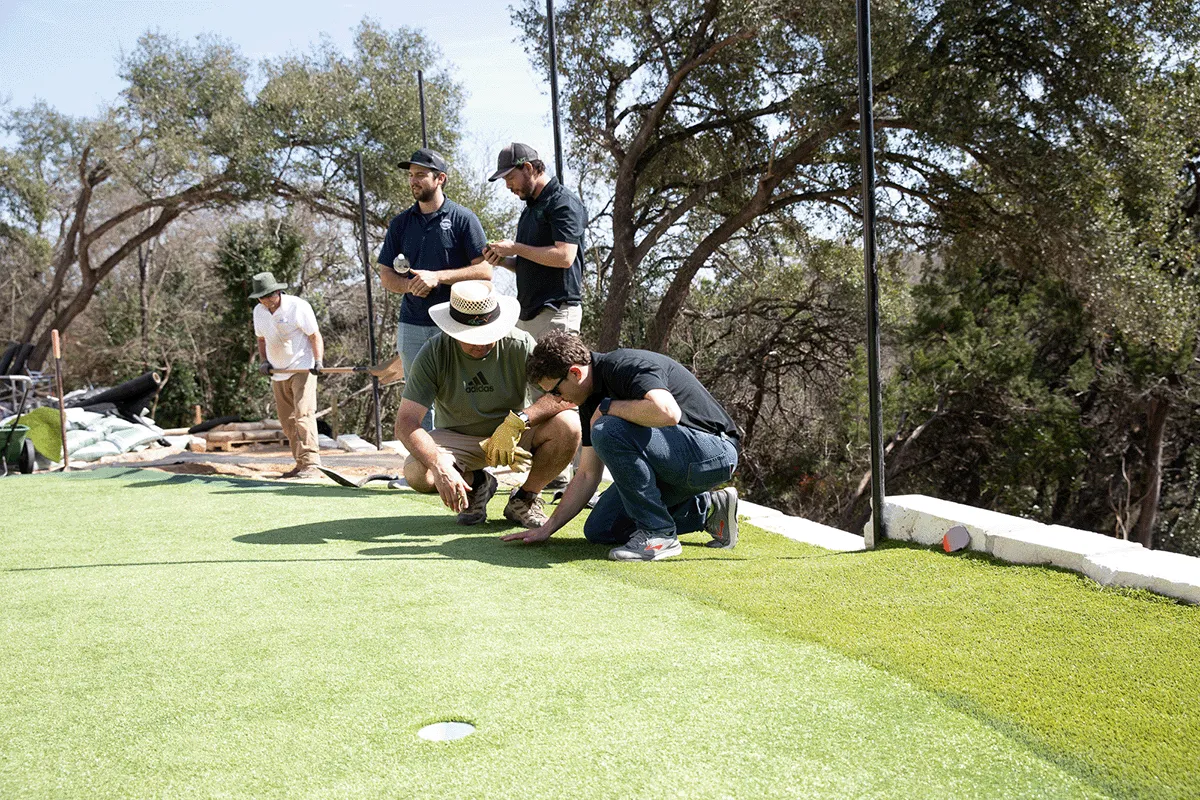
How to Maintain Artificial Turf Grass
Artificial turf is a popular choice for homeowners seeking a lush, green lawn without the constant upkeep and costs of natural grass. Artificial turf requires significantly less maintenance than its natural counterpart, but it’s not entirely maintenance-free. To ensure the longevity, beauty, and performance of your artificial turf, follow these expert tips and guidelines.
What maintenance is needed for artificial turf?
Removing debris, rinsing off dirt, and brushing remove stains are all part of regular artificial turf maintenance.
This regular maintenance is crucial for preserving the appearance and extending the lifespan of your artificial turf. Neglecting maintenance can lead to matting, weed growth, unpleasant odors, and even premature deterioration.
Why Regular Maintenance is Crucial for Longevity:
- Prevents buildup of debris and contaminants
- Maintains optimal drainage
- Reduces wear and tear
- Enhances hygiene, especially for pets and children
Benefits of Proper Care for Artificial Turf:
- Increased lifespan
- Improved aesthetics
- Enhanced safety and hygiene
- Cost savings in the long run
Essential Maintenance Practices for Artificial Grass
Daily and Weekly Cleaning Routines:
- Remove leaves, twigs, and other debris using a leaf blower or broom.
- Lightly rinse the artificial turf with water to remove dust and pollen.
- For high-traffic areas, brush the turf with a stiff broom to prevent matting.
Monthly Care Tips for Synthetic Lawns:
- Inspect the turf for any signs of damage or wear and pull any weeds
- Address any stains or spills promptly.
- Check infill levels and replenish if necessary.
Seasonal Maintenance Practices to Consider:
- In autumn, remove fallen leaves regularly to prevent staining.
- During winter, avoid heavy foot traffic on frozen turf.
- In spring, check for and address any damage caused by winter weather.
- During summer, hose down the turf to cool it down and prevent heat damage.
Effective Techniques for Cleaning Artificial Grass
Removing Debris: Best Practices for a Tidy Lawn:
If your lawn is near trees or other foliage, cleaning leaves and fallen debris from artificial turf is a breeze. Using a leaf blower is the quickest way to clear your lawn. Simply blow the debris to a corner to collect. A rake also will work just as well as on a natural grass lawn, just be sure to use one made of plastic or bamboo, as metal rakes can damage the turf.
- Use a leaf blower or a stiff broom to remove leaves, twigs, and other loose debris.
- For smaller debris, use a vacuum cleaner with a brush attachment.
Dealing with Pet Waste: Clean-Up Strategies:
Pet messes are a breeze to clean off artificial turf. Dogs love artificial turf, and owners will find it cleaner and easier to maintain than regular grass. Our infill helps to reduce odor and protect against fungus and mold. We recommend cleaning up after your pet, just like you would on regular grass. If they tend to go in the same spot, we recommend hosing the area down and using a mild detergent or turf cleaner as needed.
- Pick up solid waste as you would on natural grass.
- Rinse the affected area with water to remove any residue.
- Use a pet-safe disinfectant to neutralize odors and bacteria. Amazon has some great options

Tackling Stains: Quick Solutions for Common Issues:
Whether a glass of wine was spilled at game night or your pet left a stubborn mark, any stain on artificial turf will come out best if treated right away. Remove as much of the stain as possible with a clean cloth. Follow by spraying the area with a mixture of water and either vinegar or a natural dish or laundry detergent. Repeat cleaning with a clean cloth. For tougher stains, try using a natural degreaser. There are also plenty of solutions for sale online created specifically for artificial turf.
- For most stains, a solution of mild detergent and water can be effective.
- For stubborn stains, use a specialized artificial turf cleaner.
- Avoid using harsh chemicals or bleach, as they can damage the turf.
Grooming To Preserve A Natural Look
Artificial turf is made up of tiny synthetic pieces of vertical “grass” that need occasional grooming to stay upright and looking natural. Especially in high traffic areas, the synthetic fibers can be compacted and be flattened.
When we install your turf, we use a product called “infill.” Infill helps keep those individual blades upright, but over time, could use the help of a good brushing.
While a power broom makes the work easy and delivers great results, they are not completely necessary and you can achieve great results with a simple broom made for turf. Be sure you are using a broom with synthetic bristles, as metal can damage the turf. Brushing your artificial turf lawn every 3-4 weeks will help it look as natural as possible year-round.
Tools and Equipment for Artificial Grass Maintenance
Must-Have Tools for DIY Maintenance:
- Leaf blower or stiff broom
- Garden hose with spray nozzle
- Stiff bristle brush
- Bucket
- Mild detergent
- Pet-safe disinfectant (if applicable)
Eco-Friendly Cleaning Solutions for Artificial Lawns:
- Use a solution of white vinegar and water for a natural cleaning option.
- Baking soda can be used to neutralize odors.
Professional-Grade Equipment & When to Consider Help:
- For larger lawns or deep cleaning, consider renting or hiring professional-grade equipment like power brooms or turf sweepers.
- If you’re facing persistent issues or extensive damage, it’s best to consult a professional artificial turf maintenance service.

Preventive Measures forArtificial Grass
Weed Control Techniques for Synthetic Turf:
While it’s uncommon for weeds to grow through artificial turf because of the weed barrier, base material, and backing of artificial turf, it could still occur. In these rare cases, we recommend using a natural weed killer. A homemade solution of water, vinegar, and salt will do the trick. Adding rubbing alcohol could also help, and it will evaporate quickly, leaving minimal smell. While a natural solution may take a few days longer to kill the weed, it will keep harmful pesticides out of your turf system, keeping it safe for the whole family.
- Install a weed barrier fabric beneath the turf during installation.
- Regularly inspect for and remove any weeds that may sprout.
- If leaving town for an extended period, have somebody check on your turf to ensure now weed growth goes unchecked.
Addressing Drainage Issues to Prevent Damage:
- Ensure proper drainage during installation to prevent water accumulation.
- Check for and address any drainage problems promptly.
- Long-Term Care and Repair for Artificial Grass
Identifying Signs of Wear and Tear:
- Look for matting, fading, or thinning of the turf fibers.
- Check for any tears or damage to the backing.
When to Replace Sections of Artificial Turf:
- If you notice significant wear or damage, it may be necessary to replace sections of the turf.
- Consult a professional artificial turf installer for repair or replacement services.
Frequently Asked Questions About Artificial Grass Maintenance
Can I pressure wash artificial grass?
Yes, but use caution. Use a low-pressure setting and avoid direct contact with the backing.
What cleaning solutions are safe for synthetic grass?
Mild detergents, white vinegar, and baking soda are generally safe for cleaning artificial grass. Avoid harsh chemicals or bleach.
How can I maintain artificial grass around pets?
Regularly remove pet waste and rinse the area with water. Use a pet-safe disinfectant to neutralize odors and bacteria.
Is maintenance different for different types of artificial grass?
Yes, maintenance requirements may vary slightly depending on the type of turf and its intended use. Consult the manufacturer’s instructions for specific care guidelines.
How often should I water artificial grass?
While artificial grass doesn’t need watering for growth, rinsing it periodically helps remove dust, pollen, and pet odors.
By following these maintenance practices and addressing issues promptly, you can ensure that your artificial turf remains a beautiful, functional, and long-lasting investment for years to come.
Remember: If you have any questions or concerns about artificial turf maintenance, don’t hesitate to contact us at Southern Turf. Our team of experts is always ready to assist you with professional advice and services to keep your artificial turf looking its best.
